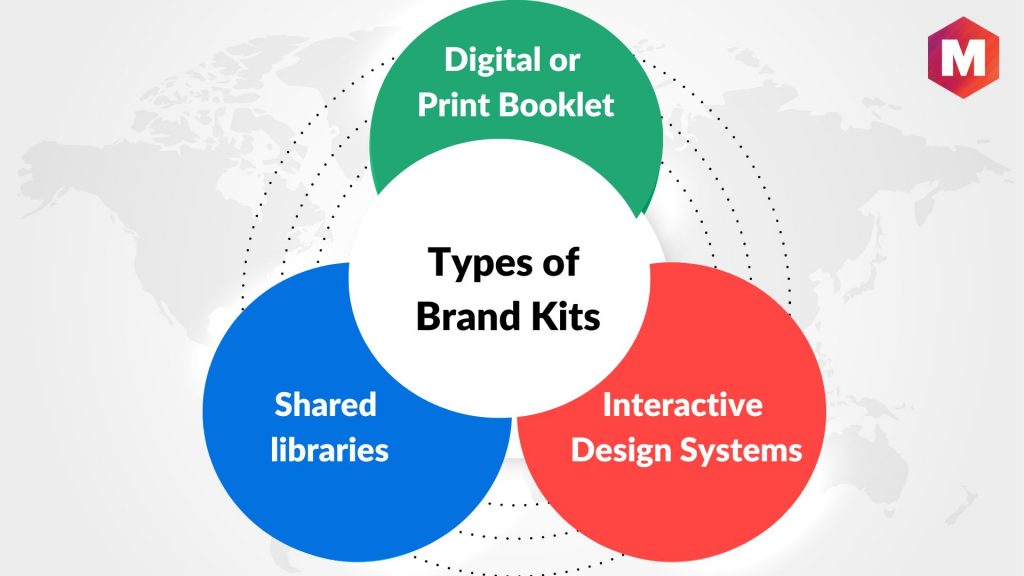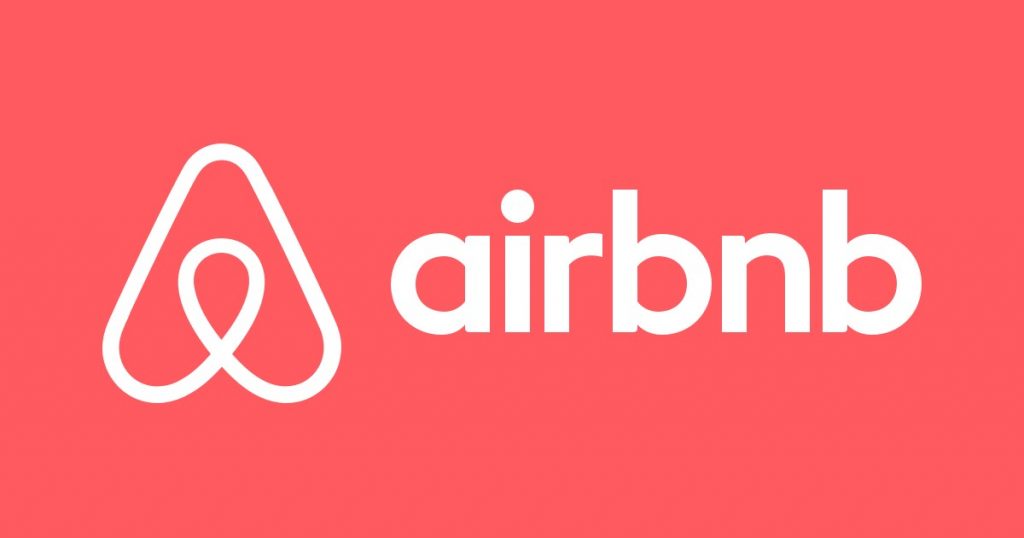Table of Contents
What is a Brand Kit?
The brand kit is a collection of visual elements that define the brand’s visual identity. It is used to create a visually consistent image for a company or product. A good brand kit typically includes a variety of visual assets and all your graphics such as logos, colors, brand fonts, and images that can be used in marketing materials.
A Brand Kit is a collection of meaningful graphical guides that are used to represent your brand. Brand Kits usually contain logos, photos, fonts, colors, images, and even templates for creating consistent branding across marketing materials. When your creative team is making visual content, this is the go-to source for information.
Brand Kits help to ensure that all products and services associated with a company have a unified visual identity and allow customers to more easily identify their preferred brands. Brand Kits also give a company’s branding an authentic, professional look and feel which can help to build trust with customers.
Creating a Brand Kit is essential for any business looking to make an impact in its industry and increase its customer base. A Brand Kit should reflect the values of your company, showcase your logo and be easy to use and understand. They should be updated as needed to keep up with the changing times and trends, as well as customer perception of your brand.
By using its own brand kit, an organization or a brand can ensure that all materials they produce share the same look and feel, helping them to build a strong brand image. Brand kits are often accompanied by a brand style guide which outlines how elements of the kit should be used correctly to maintain consistency.
Brand kits can support many different types of visual communication and make it easier for businesses to create visually engaging materials that communicate their message effectively. Brand kits are essential for creating a cohesive and professional look, no matter what type of communication is needed.
What is the purpose of a Brand Kit?
The purpose of a Brand Kit is to create a consistent visual identity across all products and services associated with your brand.
By consolidating all your brand elements into one easy-to-use kit, you not only create a stronger identity for your company but also make it simpler for your creative team to do their work. By doing this, you will avoid any confusion about how to correctly craft visuals that reflect your brand — encompassing everything from web pages, business cards, and billboards to product packaging, advertisements, and more.
Overall, Brand Kits are designed to help you communicate who you are and what your company stands for through consistent visuals, while also promoting trustworthiness in customers.
By keeping all design assets in one place, the brand kit makes it easy for designers to find what they need and stay on-brand. Plus, whenever there are changes to colors or logos, updating the brand kit will help avoid any creative roadblocks.
Types of Brand Kits
1. Digital or print booklet
Brand Kits in print or digital booklet form are one of the most popular Brand Kit formats. These booklets will contain all the essential information about your Brand, from logos to images and brand guidelines. Most Brand Kits will also include usage instructions for each element so that designers can make sure they’re using them correctly.
2. Interactive design systems
Brand Kits can also be created in an interactive format, such as a web-based system. This type of Brand Kit offers more flexibility than print booklets and allows designers to gather images from the Brand Library, customize Brand elements on the fly, and share their work with colleagues quickly and easily.
3. Shared libraries
Brand Kits can also be shared using online libraries, allowing teams to access Brand elements and collaborate on projects. Brand Kits stored in the cloud allow for more flexibility and make it easy for designers to keep up with any changes or updates.
What should be included in your brand kit?
1. Company logo
This is probably the most important element in your Brand Kit. Make sure that you include all versions of your logo, from high-resolution vector files to rasterized images for web usage. Brand Kits should also include any alternative logos or mascots that are associated with your Brand.
2. Brand assets
Brand assets can range from icons, badges, and illustrations to photos, videos, and other elements specific to your brand. This includes any visual elements you use when creating graphics for social media, websites, print materials, or anything else related to your Brand.
3. Color scheme palette
A Brand Kit should always contain a color palette so that designers know what colors to use when representing the Brand visually. In addition to primary colors, Brand Kits should also include any secondary colors that designers may need to use when creating Brand elements.
4. Imagery
Brand imagery is an important component of your Brand Kit, so make sure you have a library of high-quality images that will help tell the story of your Brand. Stock photos and illustrations can be used if necessary, but make sure you have a good selection of Brand-specific images as well.
5. Typeface
Your Brand Kit should contain all the fonts and typefaces associated with your Brand. This includes both digital and print versions, as well as variations like bold or italic versions of each font.
6. Typography
Typography is another essential element of Brand Kits. Include guidelines for how different elements should be styled, such as headings, body copy, and more.
7. Contact information
Finally, Brand Kits should include contact information for the Brand itself. This includes addresses, phone numbers, website URLs, email addresses, and social media links so customers can easily get in touch with your Brand.
How to create a brand kit?
1. Gauge Your Brand’s Current Identity
First and foremost, it’s important to take stock of your Brand’s current identity before diving into creating Brand Kits. What kind of message does your Brand currently convey? What are the visual components associated with your Brand? Write down all these elements so you can later use them as a reference when designing Brand Kits.
2. Thoroughly understand your target market
Before you create Brand Kits, you must have a thorough understanding of who your target customers are and what they want from your Brand. Researching current trends in the industry will help you create Brand assets that will resonate more deeply with your audience.
3. Keeping an eye on your competition is crucial to success
It’s also important to keep an eye on what your competitors are doing. While you don’t want to copy them, it can be helpful to see how other Brands in your industry are creating Brand Kits and using Brand elements.
4. Creating a brand story
Your Brand Story is essential for conveying the message behind your Brand. Brand stories should be brief, easy to understand, and compelling enough to draw in customers.
5. Design a memorable logo
Your Brand’s logo is the most recognizable element of your Brand Kit and should be designed with care. Choose colors and typography that reflect your Brand identity and make sure it resonates with your target customers.
6. Create a color palette that reflects your style
Your Brand Kit’s color palette should be memorable and should reflect the Brand’s identity while also being visually appealing. Choose one or two primary colors as well as some accent colors to use in Brand assets.
7. Typeface and typography
Your Brand’s typeface and typography should be consistent throughout Brand assets. Choose fonts that reflect your Brand’s identity and use them consistently across all Brand elements.
8. Imagery
In addition to logos, Brand Kits should also include images that help tell the Brand’s story. Brand-specific images are the ideal choice, but stock photos and illustrations can also be used.
9. Contact information
To conclude, Brand Kits should have the contact information for the company. This would be addresses, phone numbers, email addresses, website URLs and social media links so customers can easily communicate with your company.
For more help creating Brand Kits, contact a local Branding expert. They can provide valuable advice on Branding and Brand Kit design that will help make your Brand stand out from the crowd.
Difference between Brand Identity Kit and Brand Guidelines
Brand Identity Kits are typically more comprehensive than Brand Guidelines, as Brand Identity Kits provide specific design elements such as logos, color palettes, typefaces, and Brand imagery. Brand Guidelines provide more information about Brand usage such as Brand voice, Brand messaging, and Brand positioning.
Brand guidelines can also include Brand Identity Kits, but Brand Identity Kits do not necessarily include Brand Guidelines. Brand Identity Kits are visual elements that help bring the Brand to life and make it more recognizable. Brand Guidelines are rules, regulations, and standards that Brand owners follow when creating Brand assets.
Brand Kit Examples
Some of the popular brands that have Brand Kits include
1. Netflix
A significant element of their brand kit is how to correctly use their logo and its corresponding variations. For example, they offer tips about how much space should be surrounding the logo and wordmark, including pictures of what NOT to do when using the logo. Netflix wants its logo to be visible against any background color, so it uses a simple design and high contrast. Check details of its logos as brand assets here to know everything about the N symbol and Netflix wordmark.
2. Apple
Apple Brand Kit includes not just their logo, but also different versions of it; including ones for special occasions and their typeface. With Apple design resources, users can also find other Brand assets, like product photography and App icons. From design templates, and sketch libraries to production templates, product bezels, and brand’s fonts, to their badges and logos, their Brand Kit offers a comprehensive set of Brand assets. Have a look at the Apple brand kit here.
3. Airbnb
Airbnb Brand Kit consists of Brand elements that serve to convey the Brand’s mission, values, and personality. These Brand elements range from Brand colors, fonts, and images to Brand voice and Brand storytelling. Using Brand Kits is an effective way to create Brand recognition and loyalty. You may check the Airbnb media assets here.
How to bring your Brand Kit to Life:
1. Brand Colors: Choose Brand colors that reflect your Brand’s identity while also being visually appealing. Choose one or two primary Brand colors and one or two secondary Brand colors. Brand colors can be used in Brand logos, Brand imagery, Brand graphics, Brand typography, and even Brand storytelling.
2. Brand Imagery: Choose imagery that reflects your Brand’s mission, values, and personality. Consider using photography that is unique to your Brands such as Brand-specific images, illustrations, animation, or videos. Brand imagery can be used in Brand logos, Brand graphics, and Brand storytelling.
3. Brand Typography: Choose a font family that fits your Brand’s style and conveys the right messages. Consider using two to three fonts that complement each other in size and contrast. Brand typography can be used in Brand logos, Brand graphics, Brand messaging, and Brand storytelling.
Conclusion
A brand kit ensures brand consistency across all of your graphics and branded templates so that your customers will recognize your brand message regardless of the medium they interact with it on.
With the right Brand Kit, you can ensure that all aspects of your business are conveying the same message, giving your customers a consistent experience that builds brand loyalty and recognition.
Liked this post? Check out the complete series on Branding



